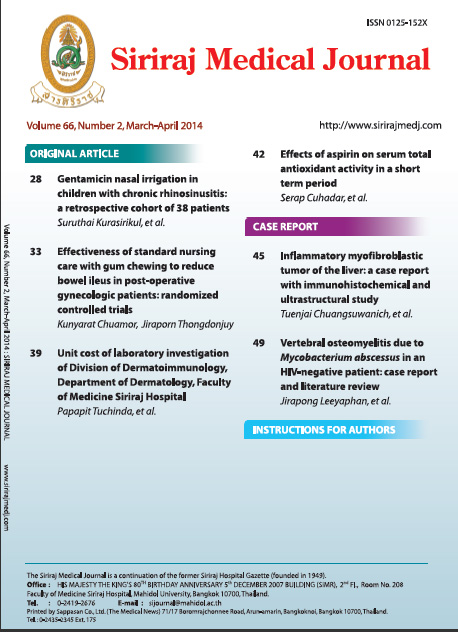Effects of Aspirin on Serum Total Antioxidant Activity in A Short Term Period
Abstract
Objective: Aspirin is generally used in the prevention of thrombotic occlusive events such as coronary heart disease and stroke. Underlying mechanism of action is that aspirin inhibits platelets by irreversibly inactivating cyclooxygenase-1, thereby blocking the generation of thromboxane A2 which is a potent vasoconstrictor and platelet agonist. Aspirin may also help to decrease the progression of atherosclerosis by its antioxidant effect in addition to its inhibiting effect on the coagulation sys- tem. The aim of this study was to examine the antioxidant effect of low-dose aspirin supplementation in a short term period.
Methods: Ten healthy volunteers were enrolled in the study. Low-dose aspirin (300 mg. daily for 10 days) was given orally to subjects. Serum specimens were taken after 12-14 hr fasting as baseline and at 4th hr and 10th day of the oral aspirin supplementation. Serum total antioxidant activity (AOA), ferritin, iron, total cholesterol, LDL cholesterol, HDL cholesterol and triglycerides were measured.
Results: Serum AOA at 4th hr were found significantly higher in comparison to baseline levels (p=0.006), but no significant difference was determined on the 10th day. There were no significant differences among baseline, 4th hr and 10th day values for the remaining parameters.
Conclusion: Our results suggest that low-dose aspirin supplementation rapidly increases total antioxidant activity. Aspirin may play a role in improving the general antioxidative potency of the body.
Keywords: Aspirin, ferritin, total antioxidant activity
Siriraj Med J 2014;66:42-44
Downloads
Published
How to Cite
Issue
Section
License
Authors who publish with this journal agree to the following conditions:
Copyright Transfer
In submitting a manuscript, the authors acknowledge that the work will become the copyrighted property of Siriraj Medical Journal upon publication.
License
Articles are licensed under a Creative Commons Attribution-NonCommercial-NoDerivatives 4.0 International License (CC BY-NC-ND 4.0). This license allows for the sharing of the work for non-commercial purposes with proper attribution to the authors and the journal. However, it does not permit modifications or the creation of derivative works.
Sharing and Access
Authors are encouraged to share their article on their personal or institutional websites and through other non-commercial platforms. Doing so can increase readership and citations.











